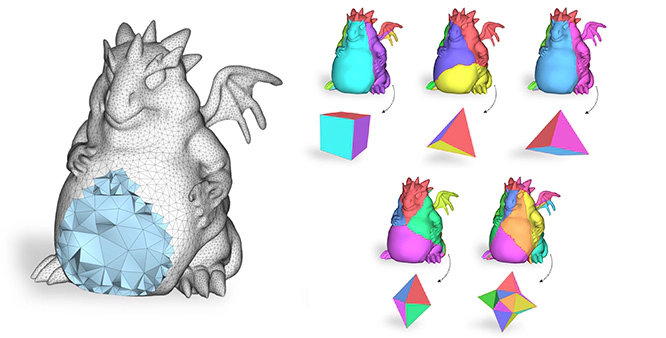VOLMAP (a Large Scale Benchmark for Volume Mappings to Simple Base Domains)

VOLMAP is a large scale benchmark aimed to support ongoing research in volume mapping algorithms. The dataset contains 4.7K tetrahedral meshes, whose boundary vertices are mapped to a variety of simple domains, either convex or star-shaped.
[Official page]